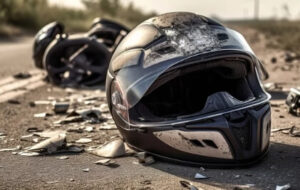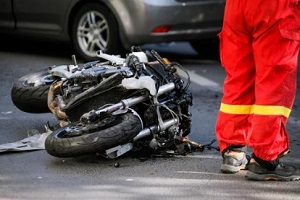 California is one of the most populated states in the US; therefore, it follows that California ranks among the top states for motorcycle ownership. Due to busy roads, laws on lane splitting, and a variety of other factors, traffic accidents continue to disproportionately impact motorcyclists.
California is one of the most populated states in the US; therefore, it follows that California ranks among the top states for motorcycle ownership. Due to busy roads, laws on lane splitting, and a variety of other factors, traffic accidents continue to disproportionately impact motorcyclists.
Both the public and some members of the local government have called for improved road safety measures. While these efforts are still forthcoming, riders today must know what to do in the event of a motorcycle accident in California.
If you, or a loved one, are a motorcycle rider, familiarize yourself with the following overview of the current motorcycle landscape in California, as well as what improvements are planned for road safety, and how a motorcycle accident lawyer can assist in the collisions that occur.
The Statistics on Motorcycle Accidents in California
Motorcycle accidents have been an issue for as long as motorcycles have been allowed to operate on public roadways. The California Statewide Integrated Traffic Records System (SWITRS) monitors the statistics on collisions, fatalities, and more—and their most recent report indicates that riders still have plenty to be concerned about. Consider the following:
- Passenger vehicles have a fatality rate of 1.15 for every 100 million vehicle miles. Compare this to motorcyclists, with a rate of 31.64.
- This means that motorcyclists are almost 30 times more likely to be killed in a crash than those operating passenger vehicles (the rate is even lower for light trucks, at just 0.67 per 100 million miles). Of all traffic fatalities within the year analyzed by SWITRS, 14% were motorcyclists.
- Approximately 80% of all motorcycle accidents result in injury or death, whereas only 20% of passengers are injured or killed in car accidents.
- Los Angeles County sees the highest rates of collisions with motorcycles, and of those accidents, almost 30% of individuals sustain injuries that are categorized as severe.
- More than half of motorcyclists involved in accidents are not wearing helmets, and more than 30% of bikers were speeding at the time of their collision.
There are many factors at play that drive the higher rates of collisions and fatalities for motorcyclists.
- These smaller vehicles are more difficult to see, making merging traffic less likely to notice them.
- Motorcycles may lane split, which is a behavior that other vehicles are not able to attempt.
- When motorcycles are hit, they lack the protective cage of a passenger vehicle to crumple around them and absorb much of the force of the impact.
Laws and Efforts to Increase California Motorcycle Safety
 Multiple attempts have been made to increase the safety of motorcycle operation and reduce collisions. The Department of Transportation has begun certifying helmets to indicate those that are the safest for motorcyclists and their passengers.
Multiple attempts have been made to increase the safety of motorcycle operation and reduce collisions. The Department of Transportation has begun certifying helmets to indicate those that are the safest for motorcyclists and their passengers.
Additionally, the state highway patrol administers a Motorcyclist Training Course (MTC) to educate new and existing bikers on best practices for increased safety. Those who participate successfully may be eligible for lower insurance rates.
California elected officials added section § 21658.1(a) to the California Vehicle Code to clarify the state’s stance on lane splitting. Lane splitting is the practice of navigating a motorcycle in between two stopped or moving lanes of traffic so that the biker may pass vehicles that are operating in their own rows.
Lane splitting is legal in California, and the state has added clarifications that attempting to stop a motorcyclist from lane splitting (such as by opening a car door or intentionally blocking the path) is illegal and could cause injury or death to the biker.
What to Do If You Are in an Accident
Despite the increased road safety measures targeted at reducing motorcycle accidents and fatalities, they do still occur at a rate greater than that of passenger vehicles. If you have been in a motorcycle accident, it may be difficult to determine who is at fault and what the next steps should be.
California is an at-fault state, which means that the person who was responsible for the collision can be liable for damages, such as medical bills and vehicle repairs. In order to receive fair treatment after an accident, it is important to work with a legal team that has experience in the complexities of motorcycle crashes.
 If you are in an accident, begin by seeking any necessary medical treatment if an emergency has occurred. If you are safe, compile as much information as possible: the other driver’s license plate number and insurance information, their name and address, any witnesses and their pertinent information, and a detailed account of what happened. Take pictures or video if possible.
If you are in an accident, begin by seeking any necessary medical treatment if an emergency has occurred. If you are safe, compile as much information as possible: the other driver’s license plate number and insurance information, their name and address, any witnesses and their pertinent information, and a detailed account of what happened. Take pictures or video if possible.
Get Help from California Motorcycle Accident Lawyers
Motorcycle accidents are a stressful situation, but that stress does not have to be compounded by what happens next. The experienced California motorcycle accident lawyers at Lehr Law can advocate on your behalf to secure the compensation that you deserve from the at-fault party. Contact Lehr Law to schedule a consultation today.
